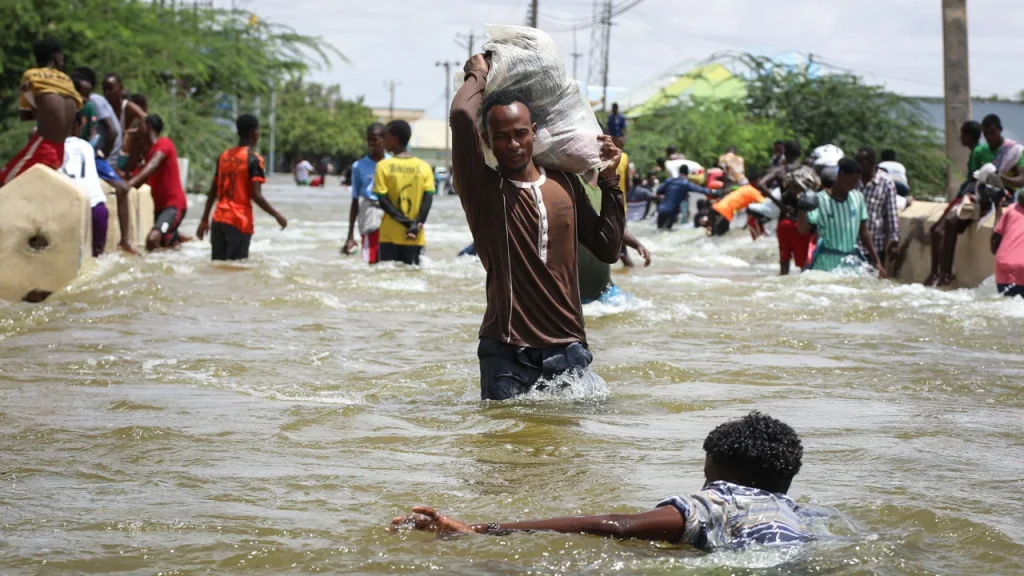Facebook Twitter (X) Instagram Somali Magazine - People's Magazine
Rising waters kill four, destroy homes and crops, and worsen humanitarian crisis amid aid funding cuts
Since the middle of April, flash floods have caused serious damage in Somalia, affecting more than 45,000 people and killing at least four, including two children and a woman. This update was shared by the United Nations humanitarian agency, OCHA, in a report released on April 30.
These floods are the result of moderate to heavy rainfall across several parts of Somalia. The country, like many others in the Horn of Africa, is extremely vulnerable to climate change. Weather patterns are becoming more unpredictable and severe, leading to disasters like floods and droughts happening more often and with greater intensity.
OCHA explained that the floods began around April 15 and have hit different regions of the country. One of the worst-affected areas is the Middle Shabelle region. On April 29, the Shabelle River overflowed, displacing about 6,000 people. Many families were forced to leave their homes and seek safety in makeshift camps built on higher ground to escape the rising water.
However, living conditions in these camps are extremely difficult. People are running out of food, clean water, and basic healthcare. Their homes were washed away, and the floods have destroyed crops, leaving people without food and harming their ability to earn a living. The Middle Shabelle region is one of Somalia’s most important farming areas, so this flooding has had a major impact on local agriculture and food supplies.

Another area hit hard by the rains is Galmudug State, located in central Somalia. On April 28, flash floods displaced around 9,500 people there. Though the rainfall was only light to moderate, it was still enough to cause severe flooding, which shows just how fragile the land has become due to repeated climate shocks.
OCHA also raised concerns about the ability of humanitarian groups to help those affected. Many of these groups are struggling with funding cuts and are unable to fully respond to the crisis. The report mentioned that aid organisations have been forced to stop, reduce, or even shut down some of their life-saving programs due to a lack of resources.
One of the major reasons for this is the recent decision by the United States to reduce its support for USAID, the country’s main international aid agency. This has left many humanitarian operations in Somalia and other countries underfunded, just as the need for help is growing.
Unfortunately, these floods are not a new problem for Somalia. In 2023, the country faced some of its worst flooding in recent years. Over 100 people died and more than a million were forced to flee their homes. That flooding was linked to the El Niño weather pattern, which causes heavy rains in East Africa.
Now, just months later, Somalia is once again facing another devastating flood emergency. The repeated disasters highlight how urgent it is for the international community to invest in long-term solutions to climate change and provide consistent support to humanitarian agencies.
As of now, thousands of families are still struggling to survive without proper shelter, food, or medical care. OCHA’s message is clear: more help is needed—and fast.
